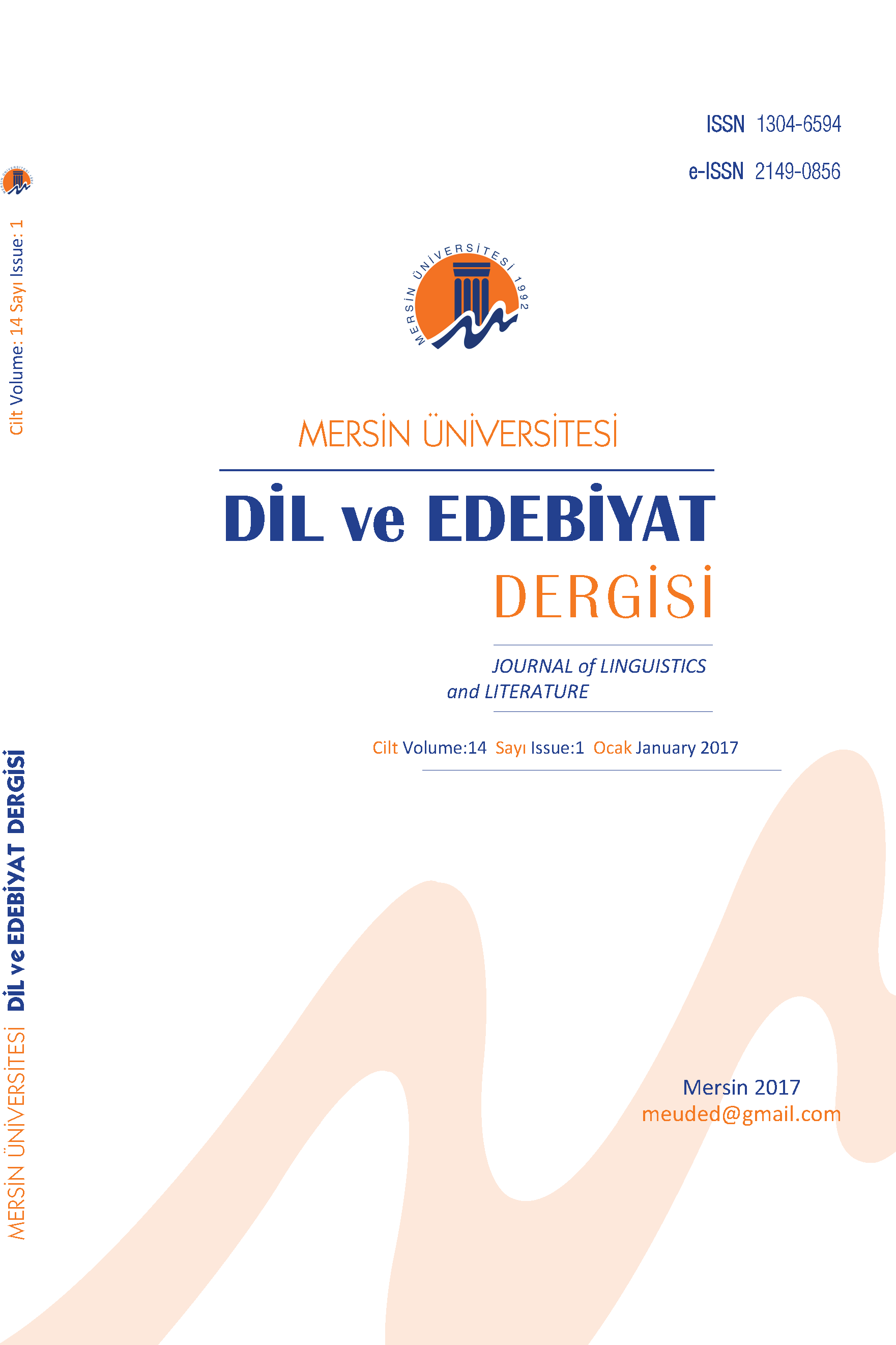Kur'an-ı Kerim'deki Hitap Biçimleri Üzerine Bir İnceleme
Bu çalışma, Kuran'daki üç tür hitap biçimi olan, "ya" ve "ya eyyuha" ilgeçleri ve sıfır biçimbirimle işaretlemeyi niceliksel olarak incelemektedir: Sonuçlar, en çok kullanılan ilgecin "ya" olduğunu, ardından "ya eyyuha"nın geldiğini göstermektedir. Sıfır biçimbirimle işaretleme yoluyla hitap biçimi ise en az görülen hitap biçimi olarak gözlemlenmektedir. "Ya eyyuha l-latheena amanuu" (Ey iman edenler), "rabbi" (Ey Rabbim), ve "rabbana" (Ey Rabbimiz) ise Kuran'da en sık karşılaşılan hitap ifadeleri olarak öne çıkmaktadır. Çalışmada ayrıca, hitapların işaret ettiği iletilerin yapıları da incelenerek, emir yapısının en yaygın yapı olduğu, ardından bildirimsel ve soru yapılarının geldiği görülmüştür.
Anahtar Kelimeler:
Hitap biçimleri, Kuran, Hitap edatları, Hitap mesajları
An Analysis of Vocative Markers in the Quran
This study quantitatively examines three types of addressing forms in the Quran: the use of the two markers "ya", and "ya ayyuha", and addressing through zero morphology. The results indicate that the most commonly used marker is "ya", followed by "ya ayyuha." Zero morphology, on the other hand, is observed as the least frequent form of addressing. Specifically, "Ya ayyuha l-latheena amanuu" (O believers), "rabbi" (O my Lord), and "rabbana" (O our Lord) are the most frequently encountered phrases of addressing in the Quran. Additionally, by analyzing the linguistic structures of vocative messages, it has been apparent that the imperative is the most prevalent structure, followed by declaratives and interrogatives.
Keywords:
Addressing forms, The Quran, Addressing particles, Vocative messages,
___
- Aliakbari, M., & Toni, A. (2008). The realization of address terms in Modern Persian in Iran: A sociolinguistic study. Linguistik Online.
- Al-Bataineh, H. (2020). The syntax of Arabic vocatives. Brill's Journal of Afroasiatic Languages and Linguistics, 12(2), 328-360.
- Braun, F. (1988). Terms of Address: Problems of Patterns and Usage in Various Languages and Cultures. Mouton De Gruyter.
- Chaika, E. (1982). Language: The social mirror. Newbury House.
- Daniel, A. S. M. (2008). The Vocative: An outlier case. In A. L. Malchukov, The Oxford Handbook of Case (pp. 626-634). Oxford University Press.
- Fitch, K. (1991). The interplay of linguistic universals and cultural knowledge in personal address: Colombian "Madre" terms. Communication Monographs.
- Fraser, B. (1996). Pragmatic markers. Pragmatics, 167-190.
- Hill, B. C. (2013). Vocatives: In a reference grammar of Romanian (pp. 801-826). John Benjamins Publishing Company.
- Hill, V. (2007). Vocatives and the pragmatics-syntax interface. Lingua, Elsevier.
- Leech, G. (1999). The distribution and function of vocatives in American and British English conversation. In H. Hasselgård and S. Oksefjell (Eds.), Out of Corpora: Studies in honour of Stig Johansson (pp. 107-118). Rodopi.
- Mehrotra, R. (2009). Non-kin forms of address in Hindi. International Journal of the Sociology of Language, 1981(32).
- Michael Daniel, A. S. (2008). The Vocative : An outlier case. In A. L. Malchukov, The Oxford Handbook of Case (pp. 626-634). Oxford University Press.
- Moutaouakil, A. (1989). Pragmatic functions in a functional grammar of Arabic. De Gruyter Mouton.
- Müller, S. (2005). Discourse markers in native and non-native English discourse (Vol. 138). John Benjamins Publishing.
- Omar, N., Mohd, S. & Kadhim, K., A. (2015). Translating vocative sentences by exclamation in the glorious Quran: A semantic analysis and message change. Quranica, International Journal of Quranic, 7(2)
- Ouanis, S., & Benzaoui, M. (n.d.). Investigating the translation of vocative style in THE Quran into English Language. University Kasdi Merbah Ouargla.
- Salahuddin, B. M. (2014). Register of the translated vocative sentences in Quranic Texts into English. Onomázein, 152-163.
- Sonnenhauser, B., & Hanna, P. N. (2013). Vocative: Addressing between system and performance. Walter de Gruyter.
- Wardhaugh, R. (2006). An introduction to sociolinguistics. Blackwell.
- Yule, G. (1996). Pragmatics. Oxford University Press.
- ISSN: 1304-6594
- Yayın Aralığı: Yılda 2 Sayı
- Başlangıç: 2004
- Yayıncı: Mersin Üniversitesi
